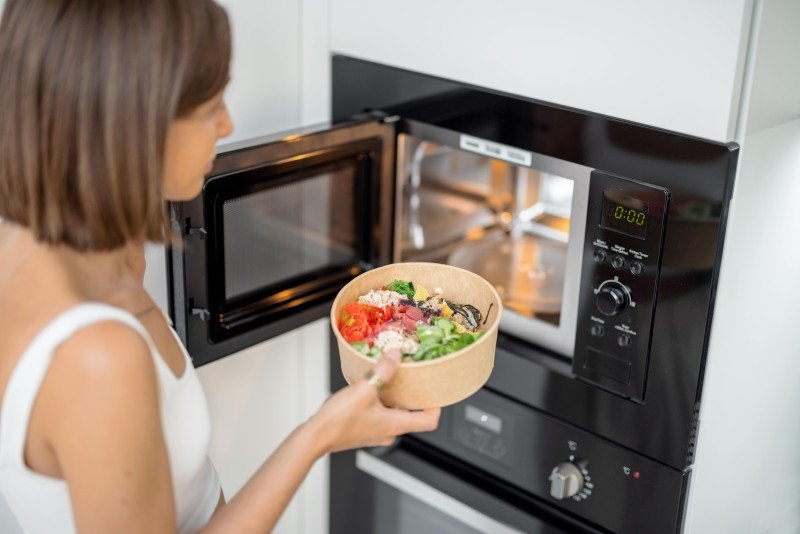How To Become A Prosperous Fan Oven Sale Even If You're Not Business-Savvy
Understanding Kitchen Ovens and Hobs: A Comprehensive Guide
The kitchen is frequently referred to as the heart of the home, and for great factor. It is where families come together, meals are prepared, and memories are created. Buy Ovens Uk to this culinary haven are two vital appliances: the kitchen oven and the hob. Understanding their features, types, and functionalities is essential for effective cooking and can significantly enhance a home chef's experience. This article will look into the world of kitchen ovens and hobs, analyzing their various types, benefits, and tips for making notified choices.
Table of Contents
- Introduction to Kitchen Ovens
- Kinds of Ovens
- Conventional Ovens
- Convection Ovens
- Microwave Ovens
- Steam Ovens
- Understanding Hobs
- Types of Hobs
- Gas Hobs
- Electric Hobs
- Induction Hobs
- Advantages of Using Ovens and Hobs
- Selecting the Right Oven and Hob for Your Kitchen
- Upkeep Tips for Ovens and Hobs
- FAQs
- Conclusion
1. Intro to Kitchen Ovens
Ovens are essential home appliances in contemporary kitchen areas. They supply a regulated environment for baking, roasting, and broiling food. With various styles and functionalities, choosing the best oven can dramatically affect cooking times, food texture, and taste.
2. Kinds of Ovens
Traditional Ovens
Traditional ovens are the most common type found in homes. They utilize either electric or gas power to heat up the interior and generally feature a single cooking space.
Advantages:
- Versatile for baking, roasting, and broiling.
- Usually cost effective.
Convection Ovens
Stove resemble traditional ovens however come equipped with a fan that flows hot air throughout the cooking chamber. This leads to even cooking and browning.
Benefits:
- Reduced cooking times due to improved air flow.
- Boosted browning and crisping of foods.
Microwave Ovens
Microwave ovens use electro-magnetic radiation to heat food rapidly, making them hassle-free for defrosting and reheating leftovers.
Benefits:
- Very quickly cooking times.
- Energy efficient.
Steam Ovens
Steam ovens use steam to prepare, preserving the wetness and nutrients in food. They are particularly popular among health-conscious cooks.
Benefits:
- Healthier cooking alternative.
- Retains vitamins and minerals in food.
3. Comprehending Hobs
Hobs, also called cooktops, are the flat surface areas on which pots and pans are positioned to cook food. They can be integrated into kitchen countertops and are available in numerous designs, fuel types, and styles.
4. Types of Hobs
Gas Hobs
Gas hobs utilize burner as their heat source, using immediate heat and accurate temperature level control.
Advantages:
- Excellent control over cooking heat.
- Usually cheaper to run than electric ones.
Electric Hobs
Electric hobs heat using electric coils or glass surface areas. They might take longer to warm up than gas, however they supply a smooth cooking surface and are easier to clean up.
Benefits:
- Even heat distribution.
- Safe, as there's no open flame.
Induction Hobs
Induction hobs utilize electro-magnetic energy to directly heat up pots and pans. They need suitable pots and pans and offer instant responsiveness.
Benefits:
- Highly energy-efficient.
- Faster cooking times and accurate temperature control.
5. Advantages of Using Ovens and Hobs
Both ovens and hobs featured their own unique set of advantages that can enhance any cooking experience. Here are a few essential benefits:
- Diverse Cooking Options: Both home appliances permit a range of cooking methods including boiling, frying, roasting, baking, and steaming.
- Time Efficiency: Modern ovens and hobs frequently feature quick cooking settings, which conserve time in the kitchen.
- Accuracy Cooking: With innovative features, users can attain much better lead to temperature level control and cooking times.
6. Selecting the Right Oven and Hob for Your Kitchen
When selecting the ideal oven and hob, different elements need to be considered:
- Size: Ensure that the appliance fits easily in your kitchen area.
- Cooking Style: Consider what kinds of food you regularly prepare.
- Fuel Type: Whether gas or electric, think about schedule and effectiveness in your location.
- Budget: Determine your budget and discover appliances that meet your needs within that variety.
Checklist for Choosing Your Oven and Hob:
- Assess kitchen area.
- Identify your cooking preferences.
- Determine power source availability.
- Compare features and specs.
- Set a budget plan range.
7. Maintenance Tips for Ovens and Hobs
Regular maintenance is important for keeping ovens and hobs in optimal condition. Here are some upkeep pointers:
- Clean Regularly: Wipe down surfaces after each usage and deep clean regularly.
- Examine Seals: For ovens, inspect door seals to guarantee they are airtight.
- Analyze Burners: For gas hobs, keep burners devoid of food debris to keep reliable heating.
- Change Filters: If your oven has a filter, replace it as advised by the maker.
8. Frequently asked questions
1. What is the distinction in between a standard oven and a convection oven?Conventional ovens
cook food through convected heat, while convection ovens flow hot air, resulting in faster and more even cooking. 2. Do induction hobs require special cookware?Yes,
induction hobs require ferrous cookware that can being magnetized to work effectively. 3. Are steam ovens worth the investment?For health-conscious people or those who frequently cook veggies and fragile foods, steam ovens can be worth the investment
due to their capability to keep nutrients. 4. Can I integrate an oven and hob into one unit?Yes, many manufacturers use combined units referred to as range cookers, which integrate both an oven
and hob into a single home appliance. 9. Conclusion Kitchen ovens and hobs are crucial parts of any culinary space, each offering distinct features and functionalities matched for numerous cooking styles.
By comprehending the
types of ovens and hobs available, their advantages, and how to preserve them, home chefs can cultivate a more efficient and enjoyable cooking experience. Whether one is an experienced cook or a novice, making informed choices about these essential kitchen appliances is crucial. 